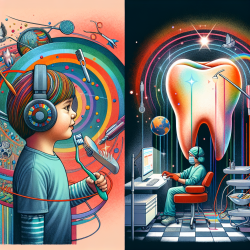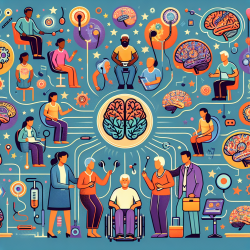The research article "Dental Treatment Characteristics of Autistic Children and Differences in Dental Procedures under General Anesthesia Relative to Healthy Counterparts" provides crucial insights for practitioners working with children on the autism spectrum. This study highlights significant differences in dental treatment approaches and outcomes for autistic children compared to their healthy counterparts, particularly when treatments are administered under general anesthesia (GA).
Key Findings from the Research:
- Autistic children often require dental treatments under GA due to severe behavioral challenges.
- The severity of autism significantly impacts the behavior of the children and the type of dental care they receive.
- Compared to healthy children, autistic children receive fewer dental procedures under GA, except for fissure-sealed teeth.
- Repeat GA sessions are common among autistic children, particularly those with severe conditions or negative behavior in the dental office.
Implications for Practitioners:
1. Behavioral Management Strategies:
Understanding that autistic children often exhibit challenging behaviors in dental settings is crucial. Practitioners should be prepared to implement advanced behavioral management strategies, including desensitization techniques and the use of positive reinforcement.
2. Use of General Anesthesia:
The study underscores the necessity of GA for many autistic children, especially those with moderate to severe conditions. Practitioners should be knowledgeable about the protocols and safety measures associated with GA and be prepared to explain these to parents or caregivers.
3. Preventive Dental Care:
Emphasis on preventive care, such as fissure sealants, is vital for autistic children. Educating parents on the importance of maintaining oral hygiene and regular dental check-ups can help reduce the need for more invasive procedures.
4. Customized Care Plans:
Each child’s treatment plan should be tailored to their specific needs, considering the severity of their condition and their behavior. Collaboration with a multidisciplinary team, including pediatric dentists and special education professionals, can enhance the effectiveness of the care provided.
Encouraging Further Research:
The findings of this study also highlight the need for ongoing research into the dental treatment needs of autistic children. Practitioners are encouraged to stay updated with the latest research and consider participating in studies that explore innovative approaches to managing dental care for children with autism.
To read the original research paper, please follow this link: Dental Treatment Characteristics of Autistic Children and Differences in Dental Procedures under General Anesthesia Relative to Healthy Counterparts.










